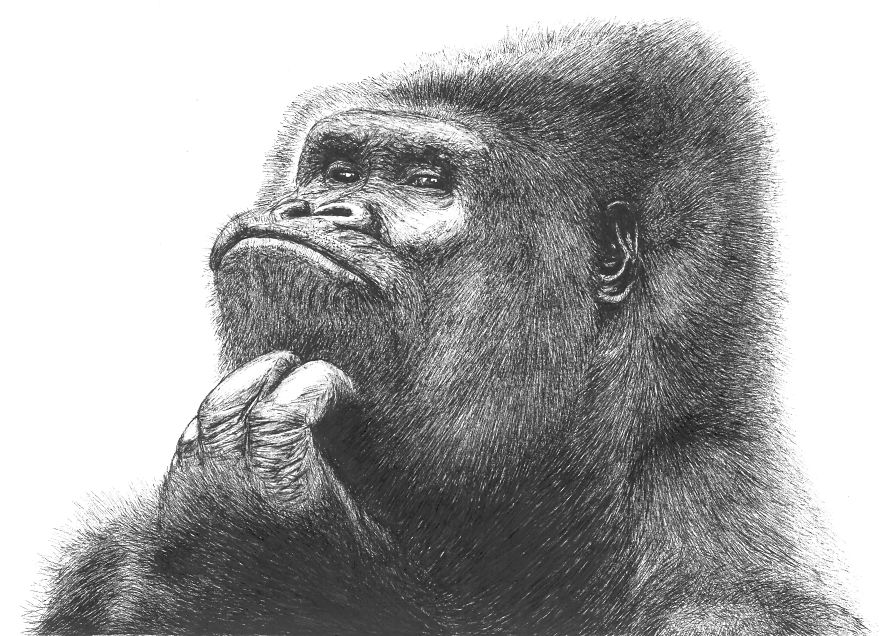Gorilla
The word “gorilla” comes from the history of Hanno the Navigator, (circa 500 BC) a Carthaginian explorer on an expedition on the west African coast to the area that later became Sierra Leone. They encountered “a savage people, the greater part of whom were women, whose bodies were hairy, and who our interpreters called Gorillae”. The word was then later used as the species name, though it is unknown whether what these ancient Carthaginians encountered were truly gorillas, another species of ape or monkeys, or humans.
They are the largest living primates by physical size. The DNA of gorillas is highly similar to that of humans, from 95–99% depending on what is counted, and they are the next closest living relatives to humans after the chimpanzees and bonobos.
Size: A3 – technical pen (Faber Castell)
In loving memory of Harambe
The word “gorilla” comes from the history of Hanno the Navigator, (circa 500 BC) a Carthaginian explorer on an expedition on the west African coast to the area that later became Sierra Leone. They encountered “a savage people, the greater part of whom were women, whose bodies were hairy, and who our interpreters called Gorillae”. The word was then later used as the species name, though it is unknown whether what these ancient Carthaginians encountered were truly gorillas, another species of ape or monkeys, or humans.
They are the largest living primates by physical size. The DNA of gorillas is highly similar to that of humans, from 95–99% depending on what is counted, and they are the next closest living relatives to humans after the chimpanzees and bonobos.
Size: A3 – technical pen (Faber Castell)




3
0